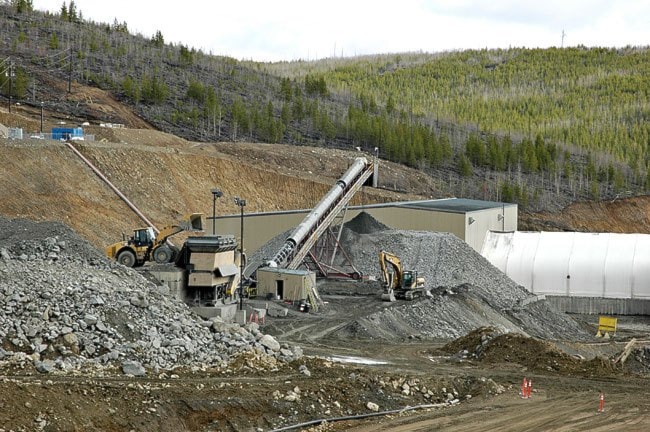The NDP’s case for raising hardrock royalties is based on two claims.
One is misleading. The other is incorrect.
Claim one: The territory has never collected hardrock royalties since taking on the power to do so in 2003.
That’s misleading because it ignores the fact no hardrock mines have operated on public land up until last year, and these new mines haven’t begun to pay royalties.
Claim two: Selkirk First Nation cashed a $5.9-million royalty cheque last year, thanks to a more advantageous royalty agreement struck with Capstone Mining, which operates the Minto mine on the First Nation’s land.
RELATED:Read all of our election coverage.
It’s true that miners paid the First Nation that sum. But it’s incorrect to suggest this means Selkirk’s deal for Minto is better than what the territory has established with mines on Crown land.
In fact, that cheque was cut using the same profit-based formula that will be applied to Yukon’s mines on Crown land.
(Strictly speaking, the first claim is also incorrect, because the territory acted as a bagman in collecting these royalties on behalf of the First Nation. But that’s a bit of a quibble.)
In fairness to the New Democrats, Minto’s royalty rates were far from clear. Last week, conservationists, the chamber of mines and the territorial government all offered conflicting accounts of how the mine pays royalties.
That’s because Minto actually pays two royalty rates.
One is based on Yukon’s Quartz Mining Act, which uses a profit-based royalty formula. That led to the $5.9-million payout.
As a side deal, the Selkirk First Nation struck another royalty deal with the mine. This one is a variable rate, based on copper prices and the amount of metal smelted.
The size of these payouts has never been disclosed. But Claire Derome, president of the Yukon Chamber of Mines, reckons the last payment would have slightly exceeded $500,000.
The NDP has also criticized the territory’s practice of collecting just pennies for every ounce of placer gold. As a result, the government receives more revenue from campground fees than placer royalties.
But increased placer royalties would only result in another $1 million, or so, to be collected by the territory. That’s not a lot to fund some of the big spending commitments the NDP is making.
The real money is in hardrock royalties. Those rates are middling, compared to other Canadian jurisdictions. But, when you lump in corporate taxes, the government’s total take in the Yukon is already higher than elsewhere in Canada.
Yet conservationists contend Yukon’s profit-based royalties are easy to dodge, thanks to numerous tax breaks that allow mines to write-off capital costs, at least for the first few years of operation.
That’s why Yukon Zinc’s Wolverine and Alexco’s Bellekeno mines, which both opened last year, aren’t expected to pay royalties until 2013.
Miners contend that if you close these loopholes, some operations may never open at all.
Contact John Thompson at
johnt@yukon-news.com.
